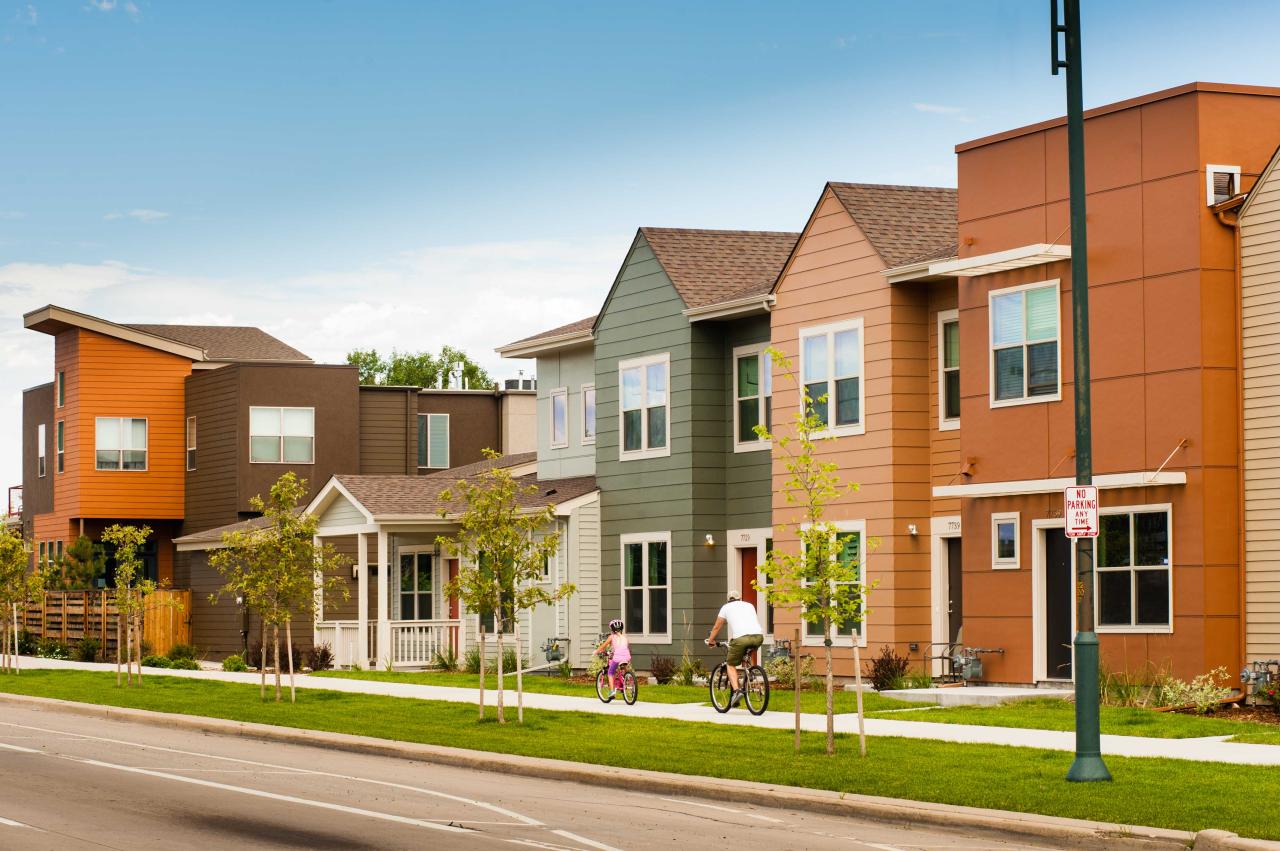The global pursuit of affordable living has become one of the most pressing challenges of our era. As populations grow and urbanization accelerates, the cost of housing continues to outpace income growth in many regions, pushing homeownership out of reach for millions and placing immense pressure on rental markets. This comprehensive article delves into the multifaceted aspects of the affordability crisis, exploring its root causes, innovative solutions, and the strategic pathways individuals, communities, and governments can take to foster more accessible and sustainable living environments. Understanding these dynamics is crucial for creating a future where everyone has access to safe, adequate, and affordable housing.
The Roots of the Affordability Crisis

The scarcity of affordable living solutions isn’t a simple issue but rather a complex web of interconnected economic, demographic, and policy failures that have accumulated over decades.
A. Economic Disparities and Wage Stagnation
- Income-Housing Disconnect: A fundamental driver of the affordability crisis is the widening gap between median household incomes and the rapidly escalating cost of housing. While wages have seen modest increases in many areas, home prices and rents have surged far more aggressively, making it increasingly difficult for average earners to afford suitable housing.
- Inflationary Pressures: Rising inflation impacts every aspect of the economy, including the cost of land, building materials, and labor. These increased costs are inevitably passed on to consumers in the form of higher home prices and rents, further eroding affordability.
- Low Savings Rates: For many, the ability to save for a substantial down payment on a home is severely hampered by stagnant wages, rising living expenses, and often, significant student loan or other consumer debt. This prevents countless individuals from transitioning from renting to owning, perpetuating demand in the rental sector.
B. Supply Side Constraints and Urban Planning Deficiencies
- Insufficient Housing Supply: Decades of underbuilding in many desirable urban and suburban areas have led to a critical shortage of housing units. This chronic undersupply, particularly of diverse housing types (e.g., starter homes, mid-sized apartments), creates intense competition and drives up prices.
- Restrictive Zoning Laws: Many municipalities have stringent zoning regulations that limit density, mandate large lot sizes, and prohibit multi-family dwellings in vast areas. These rules often stifle the construction of more affordable housing types like duplexes, townhouses, and smaller apartment buildings, favoring single-family homes on large plots.
- High Land Costs: In popular urban centers, the cost of developable land has skyrocketed. As land is a finite resource, its escalating price significantly contributes to the overall cost of new housing, making it challenging to build affordable units profitably.
- Bureaucratic Hurdles and Permitting Delays: Lengthy and complex permitting processes, often involving multiple layers of approvals and environmental reviews, can add years and significant costs to housing development projects. These delays deter builders and reduce the pace of new construction.
C. Demographic Shifts and Changing Lifestyles
- Population Growth and Urbanization: A steadily growing global population, coupled with a persistent trend of urbanization, means more people are moving to cities. This concentration of demand in limited geographical areas naturally puts immense pressure on existing housing stock.
- Smaller Household Sizes: The global trend towards smaller household sizes (more single-person households, later marriages, fewer children per couple) means that a greater number of individual housing units are required to accommodate the same population. This increases overall demand for living spaces, irrespective of population growth.
- Delayed Homeownership: Younger generations are delaying homeownership for longer periods due to economic constraints, student debt, and a preference for flexibility. Their prolonged presence in the rental market drives up rental demand and prices.
- Investment Activity: In some markets, a significant portion of housing stock is acquired by investors (both individual and institutional) for rental income or short-term vacation rentals. While this provides capital, it can also reduce the supply of homes available for owner-occupancy, especially in the more affordable segments.
Innovative Affordable Living Solutions

Addressing the affordability crisis requires a multi-pronged approach that tackles both supply and demand dynamics, embracing innovation in housing design, construction, and policy.
A. Novel Housing Models and Construction Techniques
- Accessory Dwelling Units (ADUs): ADUs, also known as granny flats or in-law suites, are secondary housing units built on the same property as a primary home. They offer a flexible and relatively affordable housing solution for family members, renters, or caregivers, increasing housing density without extensive new infrastructure. Many cities are easing zoning restrictions to encourage ADU construction.
- Modular and Prefabricated Homes: These homes are largely constructed in a factory setting and then transported to the building site for assembly. This method significantly reduces construction time, labor costs, and waste, making them a more affordable alternative to traditional stick-built homes. Advancements in design mean they can be highly aesthetic and durable.
- Tiny Homes: As their name suggests, tiny homes are dwellings typically less than 400 square feet. They promote minimalist living, drastically reduce living costs (mortgage, utilities, taxes), and offer significant environmental benefits. While not for everyone, they represent a growing niche for affordable and sustainable living.
- Co-Living and Shared Living Models: Co-living spaces offer private bedrooms within larger communal residences, where tenants share kitchens, living areas, and amenities. This model significantly reduces individual housing costs and fosters community, appealing to young professionals and students in expensive urban centers.
- Multi-Generational Housing: Designing homes with flexible layouts that can accommodate multiple generations under one roof offers an affordable solution for families, allowing them to pool resources and support each other. This often involves features like separate entrances, multiple master suites, or flexible common areas.
B. Policy and Regulatory Interventions
- Zoning Reform and Upzoning: Reforming restrictive zoning laws to allow for higher density, mixed-use developments, and diverse housing types (e.g., duplexes, townhouses, small apartment buildings) in more areas is crucial. “Upzoning” specific corridors or neighborhoods can significantly increase housing supply.
- Inclusionary Zoning: This policy requires developers to set aside a certain percentage of units in new developments as affordable housing for low- or moderate-income households. This helps integrate affordable units into market-rate developments.
- Streamlined Permitting Processes: Reducing bureaucratic red tape and expediting the approval process for housing developments can significantly lower costs and accelerate the delivery of new homes to the market. Digital platforms and clear guidelines can assist this.
- Land Value Taxation: Shifting the tax burden from buildings to land value can incentivize efficient land use and disincentivize land speculation, potentially making land more affordable for development.
- Public Land Utilization: Governments can unlock significant land resources by dedicating underutilized public lands for the development of affordable housing, bypassing high land acquisition costs.
C. Financial and Funding Mechanisms
- Subsidies and Grants: Government subsidies, grants, and tax credits are vital tools to bridge the affordability gap, making it financially feasible for developers to build affordable housing and for individuals to access it. These can target specific demographics or income levels.
- Community Land Trusts (CLTs): CLTs are non-profit organizations that acquire and hold land permanently in trust for the benefit of the community. They separate the ownership of land from the ownership of buildings on it, ensuring that housing remains affordable for generations by controlling the land cost.
- Low-Income Housing Tax Credits (LIHTC): These federal tax credits (in countries where they exist) incentivize private investors to fund the development or rehabilitation of affordable rental housing. They are a cornerstone of affordable housing finance in many regions.
- Rent-to-Own Programs: These programs offer a pathway to homeownership for individuals who may not immediately qualify for a mortgage. A portion of their rent payment goes towards a future down payment, allowing them to build equity over time.
- Shared Equity Models: In shared equity schemes, a non-profit organization or government entity co-owns a portion of the home with the buyer. This reduces the initial purchase price for the buyer, and when the home is sold, the appreciated value is shared, ensuring the home remains affordable for future buyers.
Benefits of Prioritizing Affordable Living
Investing in and implementing affordable living solutions yields widespread benefits that extend far beyond simply putting a roof over someone’s head.
A. Economic Stability and Growth
- Increased Disposable Income: When housing costs are affordable, households have more disposable income. This can be spent on other goods and services, stimulating local economies, or saved, contributing to long-term financial stability.
- Reduced Poverty and Inequality: Affordable housing is a critical tool for poverty reduction. It provides a stable foundation from which individuals can access education, employment, and healthcare, breaking cycles of poverty and reducing socio-economic inequality.
- Stronger Workforce and Labor Mobility: When workers can afford to live near their jobs, it reduces commuting times, increases productivity, and enhances labor market flexibility. Companies can attract and retain talent more easily when the local housing market is affordable.
- Reduced Public Costs: Homelessness and housing insecurity place significant burdens on public services, including emergency shelters, healthcare, and social services. Investing in affordable housing can reduce these long-term costs.
B. Social Well-being and Equity
- Improved Health Outcomes: Stable and affordable housing is directly linked to better physical and mental health outcomes. It reduces stress, improves access to healthcare, and provides a safe environment conducive to well-being.
- Enhanced Educational Attainment: Children from stably housed families tend to perform better in school, experience fewer disruptions, and have greater access to educational resources. Affordable housing allows families to remain in communities with good schools.
- Stronger Communities: Diverse and inclusive communities, where people of all income levels can afford to live, are more vibrant and resilient. Affordable housing fosters social cohesion and reduces segregation.
- Increased Public Safety: Studies often show a correlation between stable housing, economic opportunity, and reduced crime rates. Affordable living contributes to safer and more secure neighborhoods.
C. Environmental Sustainability
- Reduced Sprawl: By promoting higher-density, mixed-use developments and infill projects within existing urban areas, affordable housing initiatives can help curb urban sprawl, preserving green spaces and reducing reliance on car-dependent commutes.
- Lower Carbon Footprint: More compact and affordable housing often means shorter commutes, greater access to public transportation, and reduced energy consumption per capita. Modular and prefab construction also often have lower environmental impacts.
- Resource Efficiency: Smaller homes and multi-unit dwellings typically require fewer resources to build and maintain compared to large, single-family homes, contributing to overall environmental sustainability.
Strategies for Individuals and Communities
While large-scale policy changes are essential, individuals and local communities can also play a role in promoting affordable living.
A. For Individuals Seeking Affordable Housing
- Budget Realistically: Understand your financial limits and create a detailed budget. Be prepared to make compromises on location or size to find a home within your means.
- Explore Government Programs: Research and apply for any local, regional, or national affordable housing programs, grants, or first-time homebuyer assistance schemes for which you may qualify.
- Consider Alternative Living Models: Be open to exploring options like ADUs, co-living, tiny homes, or shared living arrangements if they align with your lifestyle and budget.
- Improve Financial Literacy: Focus on improving your credit score, reducing debt, and increasing savings to enhance your eligibility for housing loans or rental agreements.
B. For Communities and Local Governments
- Form Community Partnerships: Foster collaborations between local government, non-profit organizations, developers, and community groups to identify needs and implement affordable housing projects.
- Create Housing Trusts: Establish local housing trusts funded by various sources (e.g., dedicated taxes, development fees) to provide grants or loans for affordable housing development.
- Educate the Public: Address misconceptions about affordable housing and build public support for its development by highlighting its benefits for the entire community.
- Incentivize Developers: Offer incentives (e.g., tax abatements, relaxed parking requirements, expedited permitting) to developers who commit to building affordable housing units.
Conclusion
The pursuit of affordable living is not merely a social imperative but an economic necessity for robust, equitable, and sustainable societies. The current crisis, driven by a complex interplay of economic pressures, supply-side constraints, and demographic shifts, demands innovative and collaborative solutions. From the adoption of novel housing models and transformative policy reforms to strategic financial mechanisms and community engagement, the pathways to greater affordability are diverse and multifaceted. By prioritizing accessible housing, we can foster healthier communities, stimulate economic growth, and ensure that the fundamental right to a safe and affordable place to call home is realized for all.













